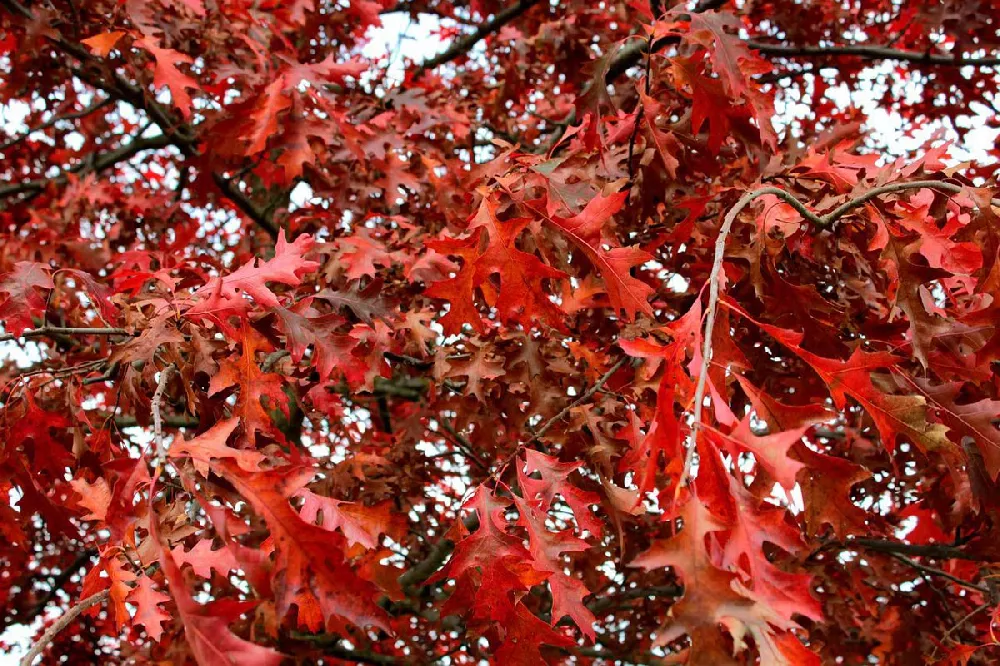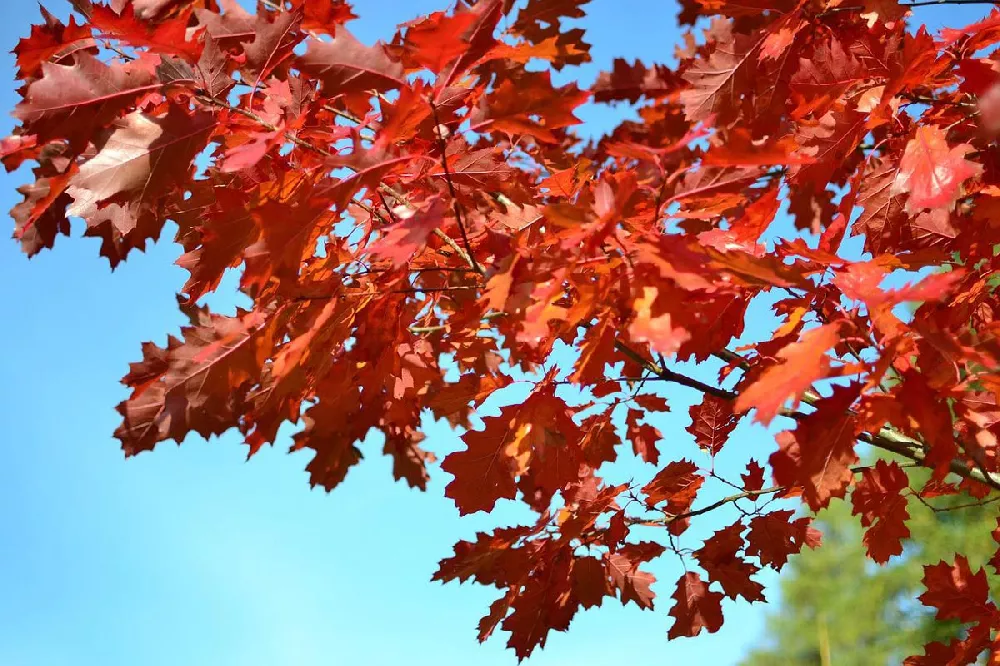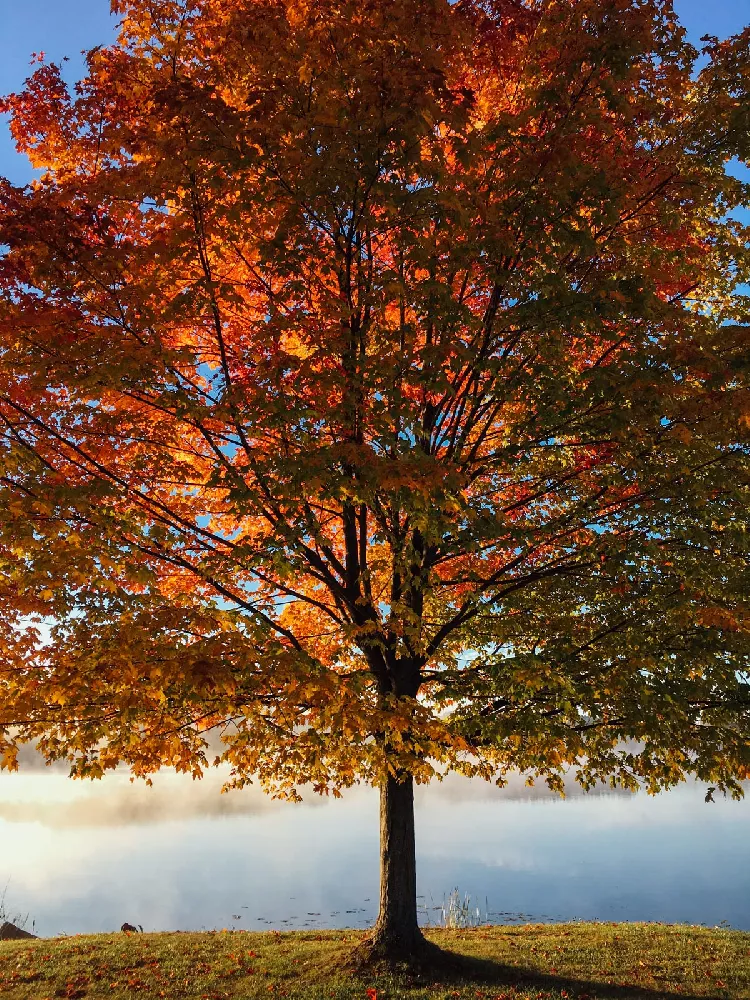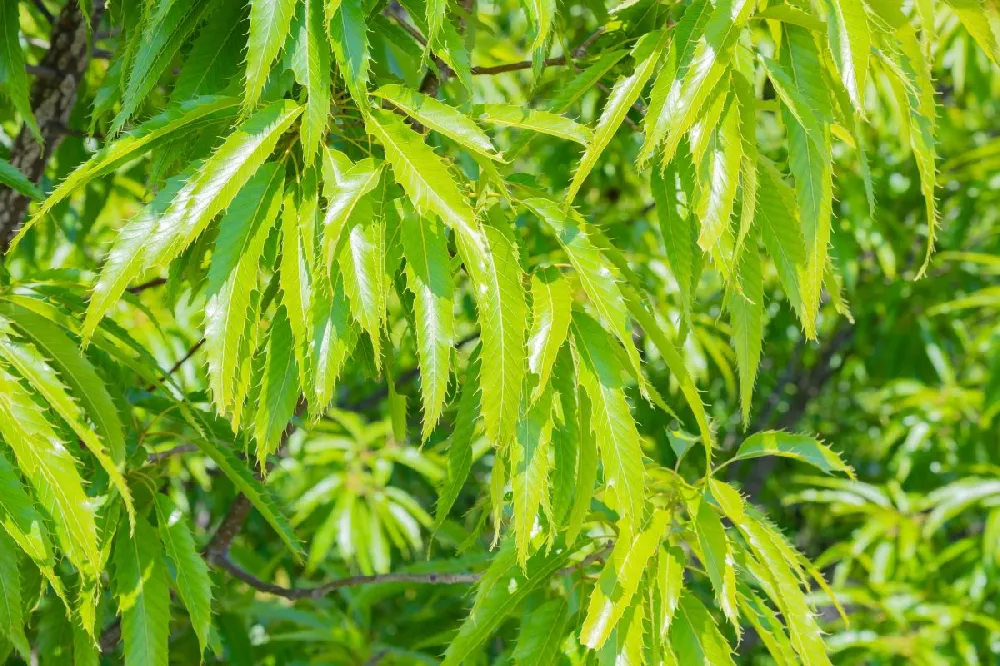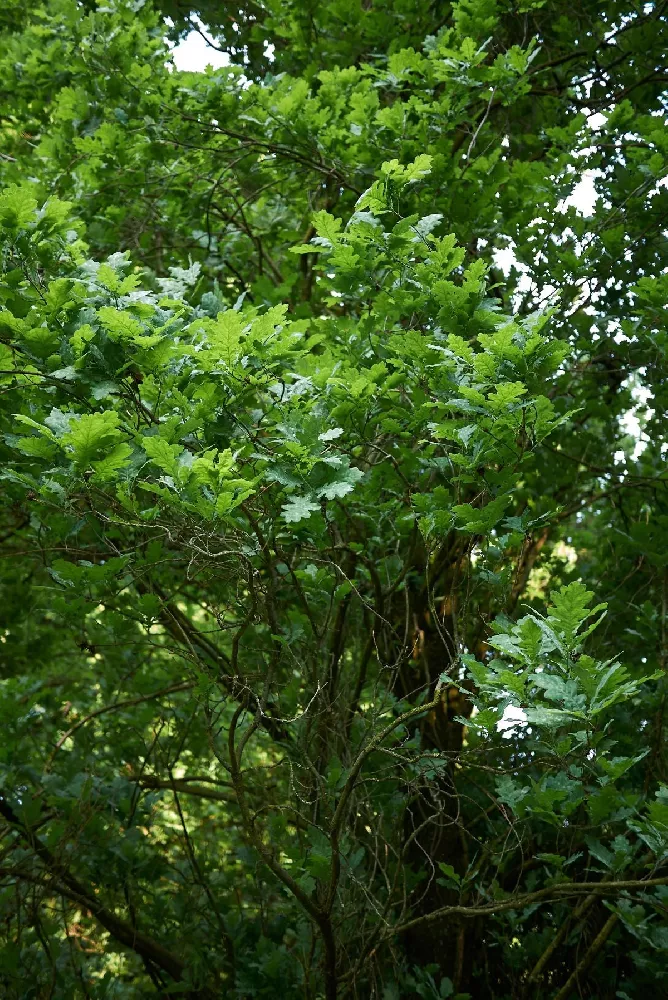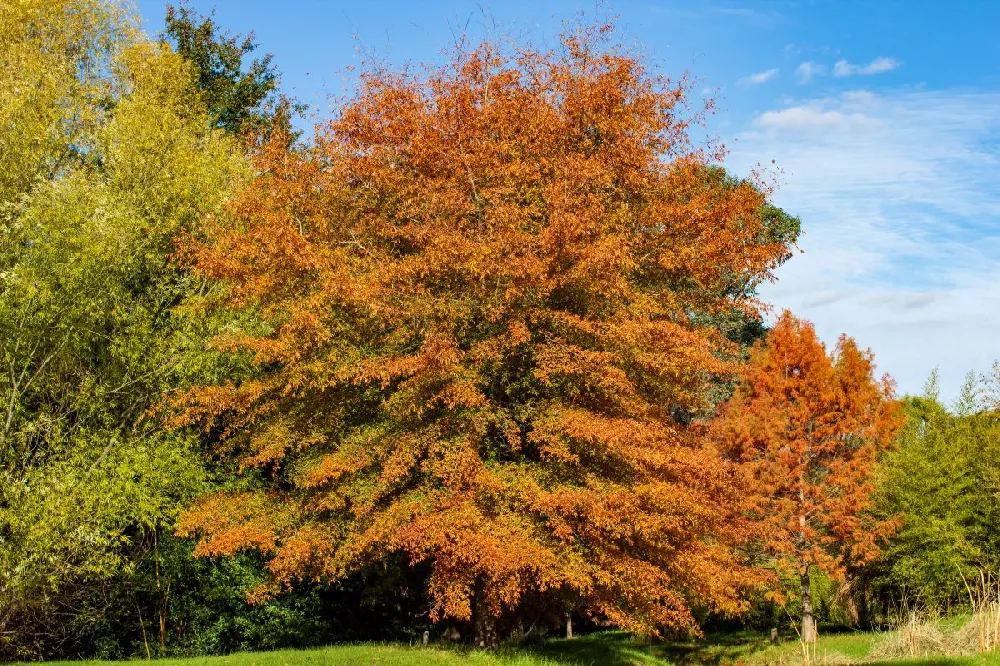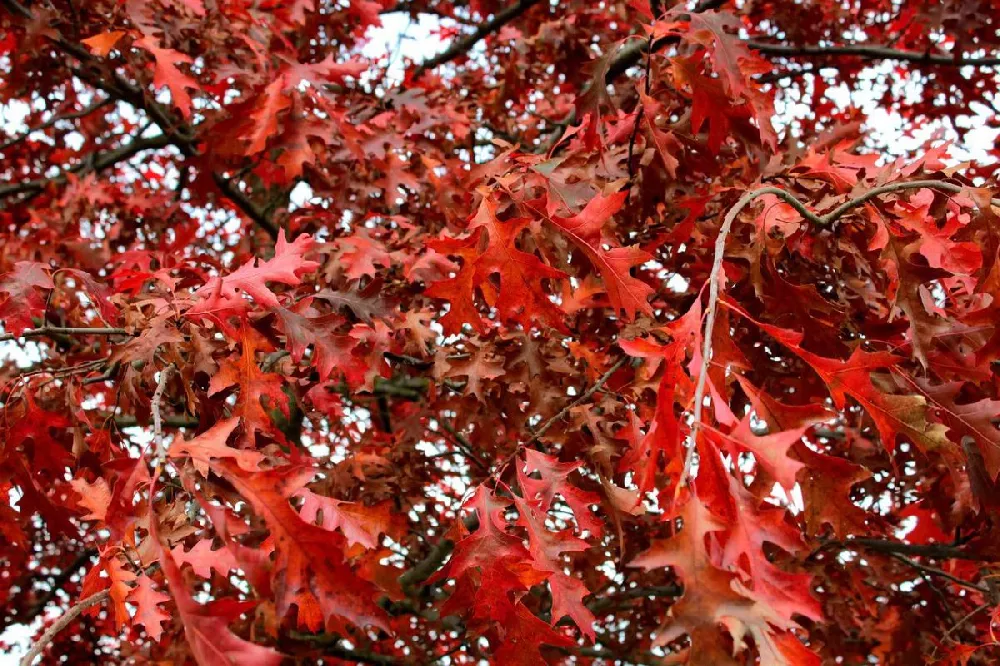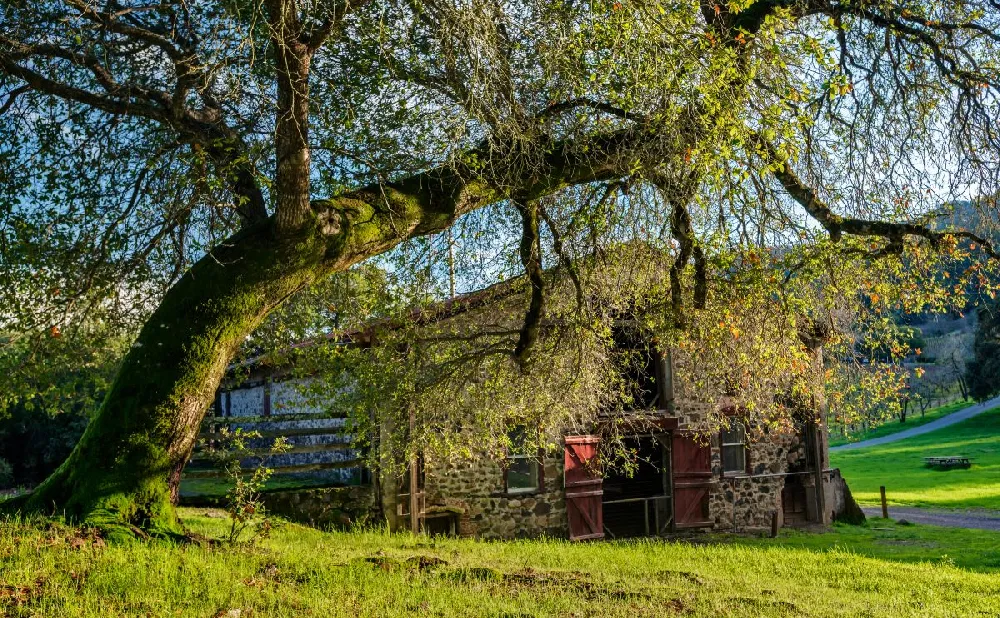- Home >
- Ornamental Trees >
- Shumard Oak Tree
Shumard Oak Tree for Sale - Buying & Growing Guide
The Shumard oak tree, Quercus shumardii, is a stately, durable tree that will provide generations of shade and beauty for you and your family. It's resilient enough to be able to withstand droughts, floods, and high winds, and it thrives throughout most of the continental U.S. The Shumard oak tree has leathery dark green leaves with seven to nine lobes that turn brilliant shades of red and bronze in autumn, making for a spectacular fall display. As the tree ages, its canopy becomes broad and pyramidal, providing excellent shade as it reaches its mature height of 40 to 60 feet. The bark is smooth and gray but grows darker and more furrowed with time. In the spring, it produces small yellow catkins, and if fertilized, rounded acorns. Here are a few more reasons to consider a Shumard oak tree for your landscape:
- The Shumard oak tree is a fast grower, putting on several feet of new growth each year.
- It tolerates very dry conditions, but it can also handle short-term flooding or soggy, pond-side locations.
- It needs little pruning or care and grows easily with a minimum of fuss.
Enter your zip code to find nearby stores that may carry this plant.
Plant Care
Sunlight

Plant your Shumard oak tree where it will receive full sun — at least six hours a day of direct light.
Watering
Mature trees only need water in drought conditions; give young trees 1 inch of water a week.
Fertilizing

Fertilize in spring with a general-purpose, balanced product designed for landscape trees and shrubs.
Planting and Care
Planting instructions
Site your Shumard oak tree in a sunny spot where it will have plenty of room to grow, keeping in mind that a mature tree can have a spread of up to 60 feet. Choose a site with well-drained soil that is not under any overhead utility cables. Unpot the sapling and tease out any encircling roots, which can girdle the tree and slowly kill it. Dig a hole that’s as deep as the root ball and twice as wide, and place the tree in the hole, spreading out the roots. Holding it upright and steady, fill in around the roots with topsoil, tamping down as you go to eliminate air pockets. Water thoroughly. Apply a 2- to 3-inch layer of an organic mulch, such as bark chips, around the tree’s root zone to conserve moisture and hinder weed growth, being careful that it does not touch the trunk.
Watering and nutrients
Water your newly-planted Shumard oak tree once a week during its first year, giving it about an inch of water at a time. This will help it establish a deep and robust root system. In subsequent years, your tree should be fine with minimal watering. If the soil is dry 2 inches below the surface, give it a drink. Mature trees shouldn’t need regular fertilizing, but you can feed young trees to encourage growth with a slow-release, balanced fertilizer.
Pollination
Oak trees are monoecious, meaning that both the male and female reproductive organs are on the same tree. In the case of the Shumard oak tree, the catkins that appear in the spring are wind-pollinated to produce acorns. These drop from the tree or are carried by animals to other locations, where they sprout into new trees.
Pruning
When your Shumard oak tree is young, you can prune it for shape, but this is optional and may not be necessary. Prune out any broken, diseased, or dead branches whenever you see them. Oak trees are prone to a disease called oak wilt, which is caused by attacks on the tree through fresh pruning cuts, so avoid extensive pruning unless it’s absolutely necessary.
Pests, diseases, and animals
There are a number of insect pests that may appear on your oak tree, including the oak shothole leafminer, the cankerworm, and tent caterpillars. None of these is a problem in small numbers, and a healthy tree should have no difficulties fighting off infestations. Diseases of the oak tree include oak wilt, which is a fungus that is introduced through open wounds by beetles. Symptoms include leaf drop and leaves changing color prematurely. Small animals may also be attracted to your oak tree for the acorns, including squirrels, raccoons, and rabbits.
Achieving maximum results
Ensuring success with your Shumard oak tree isn’t hard: it’s an easy tree to grow and is likely to flourish where planted, regardless of its setting. But that doesn’t mean there aren’t steps you can take to encourage its growth, especially while it is young. A mature, 60-foot oak tree can manage with little intervention, but when your tree is newly planted, or only a few years old, it can benefit from supplemental watering when conditions are dry and a spring dose of a general fertilizer to stimulate and encourage robust growth throughout the season. Keep an eye on your young tree and prune out diseased or broken limbs, and you will be rewarded with a handsome specimen tree when it reaches maturity.
FAQs
How is a Shumard oak tree best used in a landscape?
Where can I grow a Shumard oak tree?
This versatile tree grows throughout much of the U.S., thriving in USDA hardiness zones 5 through 9. This means it can be grown anywhere from the Pacific Northwest, through the southern states, and into the coastal parts of New England, with little difficulty.
Is the Shumard oak a deciduous tree?
Yes, your Shumard oak will drop its leaves in the winter. Before that, however, it will offer an autumn show of vivid red to bronze colors that will make it a standout element in your landscape. In spring, the new leaves will be a lighter green, darkening as the season goes on, with yellow-green catkins appearing on the ends of branches.
Compare Similar Products
You can't add more Product Name - Product size to the cart.
OK